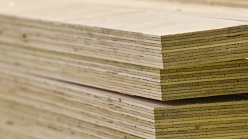CLT, KVH or LVL? Types of wood in building

The construction sector is set to undergo a significant transformation in the coming years. The drive towards zero-carbon and the emphasis on using renewable materials mean that construction companies are using more and more wood.
Climate change as a cause for change
The climate crisis is accelerating, and the consequences will be severe. Increases in the intensity of weather events and the Earth's average temperature mean that all sectors of the economy will have to adapt to the new reality. In the coming years, governments will be moving towards zero carbon, which will translate into dramatic changes in the economy.
The construction sector will be one of the sectors facing major transformations. According to data, the sector was responsible for 36% of energy consumption and 39% of greenhouse gas emissions in 2018[1]. The construction industry will have to change the technologies they use in the coming years to be able to meet the increasingly stringent requirements of legislators.
It can be expected that in the next decade there will be an increased interest in construction methods such as modular and timber frame technology. The materials used will also change - already in Germany and Scandinavia there is a move away from concrete and towards wood materials and prefabrication.
,,Today's wood materials provide high quality, long-lasting durability and environmental friendliness. Wood for their production is obtained from sustainably managed forests, and each cut is compensated by plantings. There are many types of wood construction materials, but four are most commonly used: CLT, KVH, LVL and I-beams,"- says Roman Jakubowski, Sales Director at Unihouse S.A.
CLT timber
CLT stands for "cross laminated timber". The technology was developed in 1947 by French engineer Pierre Gauthier, but it did not become widespread until the late 1980s and early 1990s.
CLT panels consist of alternately glued boards made mostly of spruce wood. The type of glue used determines the fire resistance of the whole - in the case of melamine glue the minimal amount of formaldehyde contained in it increases the strength of the whole. There is also used polyurethane glue, which does not contain formaldehyde, so the panel is more ecological, but a little less resistant to fire. This does not change the fact that the fire resistance of CLT panels is higher than unprotected steel.
CLT ensures high tightness, open diffusion of partitions and acoustic insulation. Cross laminated timber can be used to create walls, floors and ceilings, which gives a wide range of possibilities for architects and constructors. The 85 meter high Mjøstårnet skyscraper in Brumunddal, Norway, is an example of the material's versatility and strength.

KVH timber
Another type of wood used in construction is KVH glued laminated timber (Konstruktionsvollholz, structural solid wood). It is used for the construction of walls in frame building, ceilings, roof trusses and floor joists. Individual pieces of wood are glued together with micro-dovetails.
KVH is usually produced from spruce trees that have been chamber-dried to 15% moisture content. Thanks to that it provides high strength of the construction - we are talking about strength class C24. According to the EN1912 standard, this wood is not susceptible to torsion and does not develop micro cracks. It also provides effective fire protection - KVH has chamfered edges and is four-sided planed, which prevents the spread of fire.

LVL wood
Wood-based materials such as LVL (laminated veener lumber) are also used in wood construction. Its resistance to bending, high resilience, and much lower weight than steel or concrete make it suitable for use as a lightweight and strong structural element of walls or roof. It is suitable for constructing beams, rafters, purlins or masonry.
LVL is made from glued laminated softwood veneers (thin sheets). Thus prepared board has very good mechanical properties and is easy to process. The use of this type of wood also has a beneficial effect on the energy efficiency of the building - LVL is recommended by Pasivhaus Institut Darmstadt.

I-beams
Another timber material used in modern construction is I-beams, known as I-beam in English. The I-beam consists of two strips - top and bottom - made of LVL glulam, with an OSB web in between. The whole is connected by compression on a special press with the use of water-resistant adhesives.
I-beams are distinguished by high stiffness and strength, but above all a positive effect on the energy efficiency of buildings - they are most often used in passive construction, where they serve as ceiling beams or rafters. Thanks to low weight and resistance to deformation under the influence of moisture, they are an interesting alternative to solid wood or sawn timber.

The future of wood in construction
The multitude of wood-based building materials opens up a wide range of possibilities for timber home builders. Although the traditional concrete and steel-based method of construction still dominates, more and more projects made of wood are being built every year.
Wood has made a comeback in recent years as a building material. Both environmental requirements and technological developments have led to the emergence of new companies involved in the production of wooden houses, and countries are actively investing in this sector. Examples include the Swedish housing program Allmännyttans Kombohus or the Polish state-owned company Polskie Domy Drewniane.
The importance of low-carbon, green technologies will grow even more in the coming decades. It is therefore certain that the construction industry will be transformed and that the wide range of options for using wood, its ease of processing and its 100 percent renewability will be the leading drivers of change.
[1] https://iea.blob.core.windows.net/assets/3da9daf9-ef75-4a37-b3da-a09224e299dc/2019_Global_Status_Report_for_Buildings_and_Construction.pdf
Information
© 2022 UNIHOUSE SA All rights reserved. | Design Sensorama





